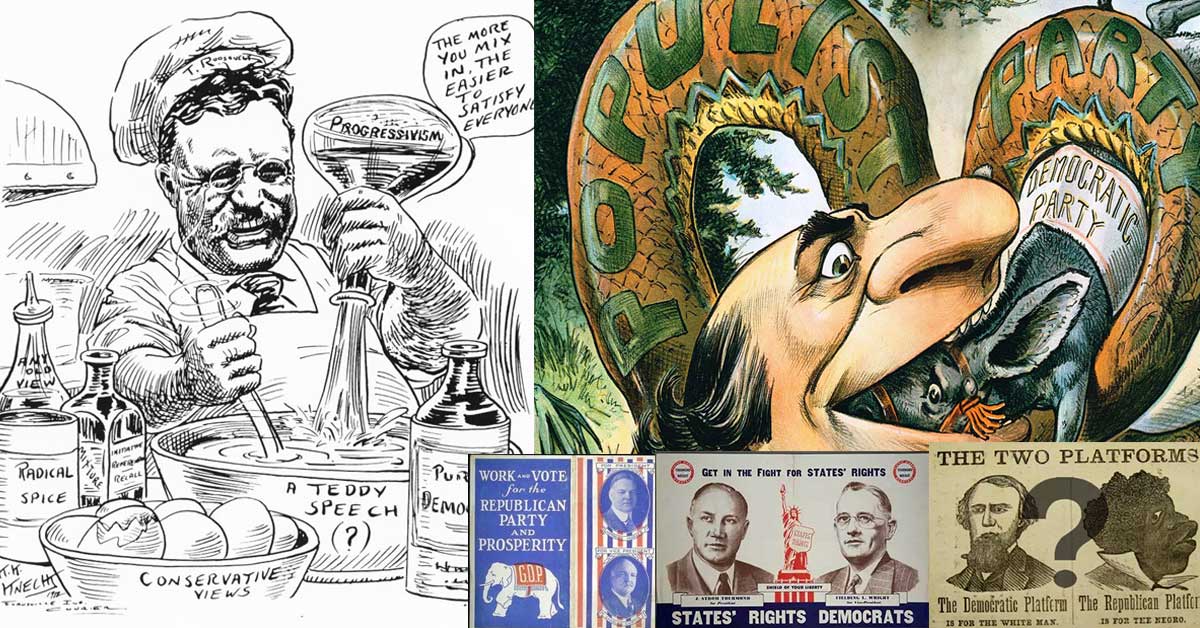The Factions of the Third Party System

The factions of the third party system are indicative of the actual factions in American history that comprise the “big tent” political parties of any era.
The U.S. political parties changed over time as the country progressed and modernized. Today the party’s are two big tents, but those tents looked different in each party system.
The articles below explain the many complex changes from 1776 to today.

The factions of the third party system are indicative of the actual factions in American history that comprise the “big tent” political parties of any era.

I fact-check Dinesh D’Souza’s movie Hillary’s America: The Secret History of the Democratic Party.

The New Deal Coalition and Conservative Coalition are two coalitions that are emblematic of both the 20th century party switches and the modern parties.

We explain the “vast-right wing conspiracy” (or right-wing strategy) that Hillary talked about in the 90s (and the left-wing equivalent).

The modern Tea Party is a progressively conservative nativist protectionist populist movement that represent a response to globalism and progressive social liberalism.

We explain three different types of Republicans found in America during Civil War Reconstruction: moderate, conservative, and radical Republicans.

Notable political factions, politicians, and platform planks switched between the major U.S. political parties throughout U.S. history leading to a number of complex changes. Here are some different ways to look at “the party switches” and different “party systems” the changes resulted in.

We discuss racial code words and “dog-whistle politics,” terms that describe the code words politicians use to imply politically incorrect ideas to their base.

The Federalists and Anti-Federalists were the first political factions of the U.S.. They arose out of a debate over the ratification of the 1787 Constitution and went on to form the basis of our current two-party system.